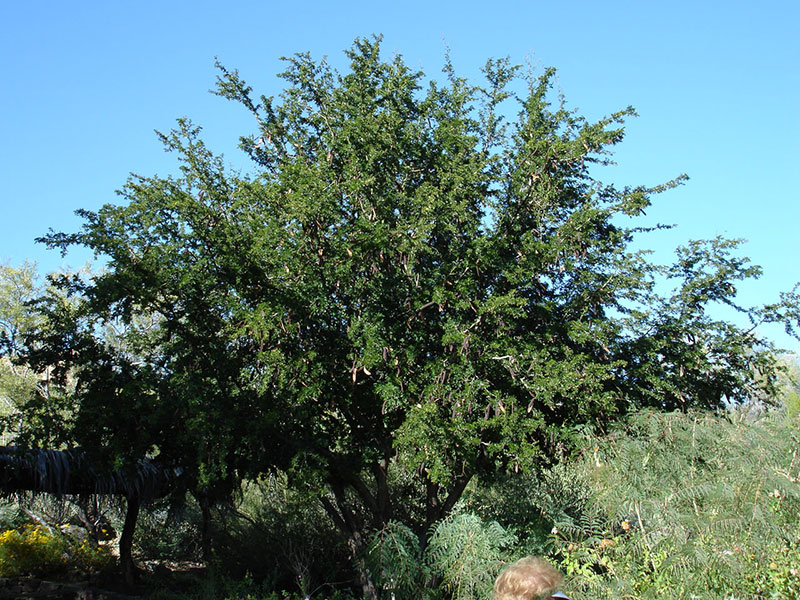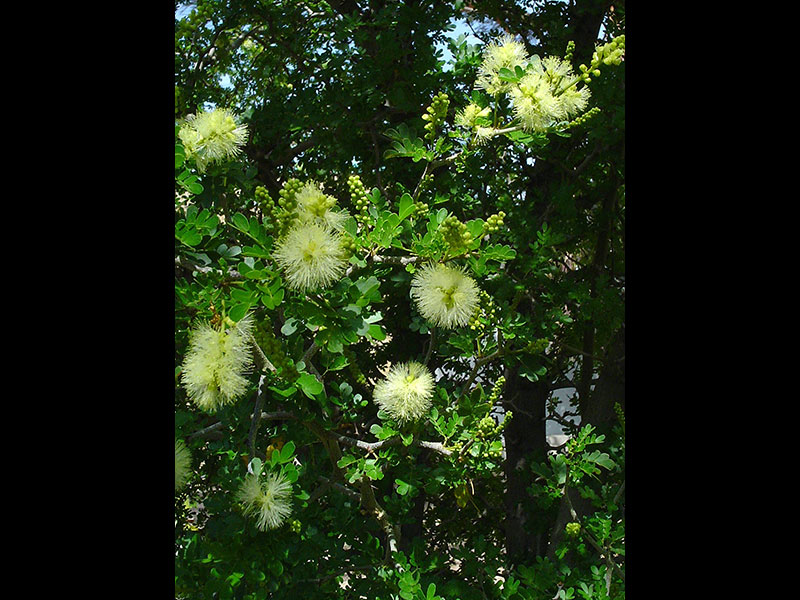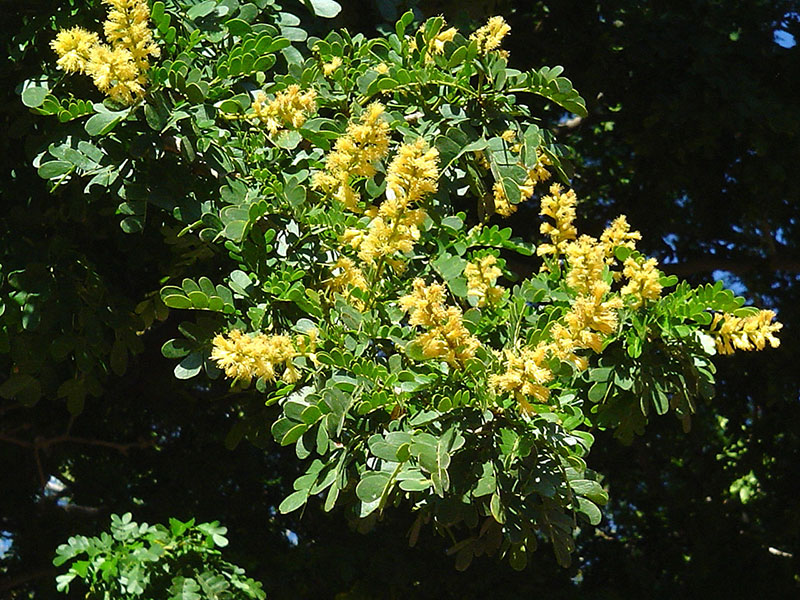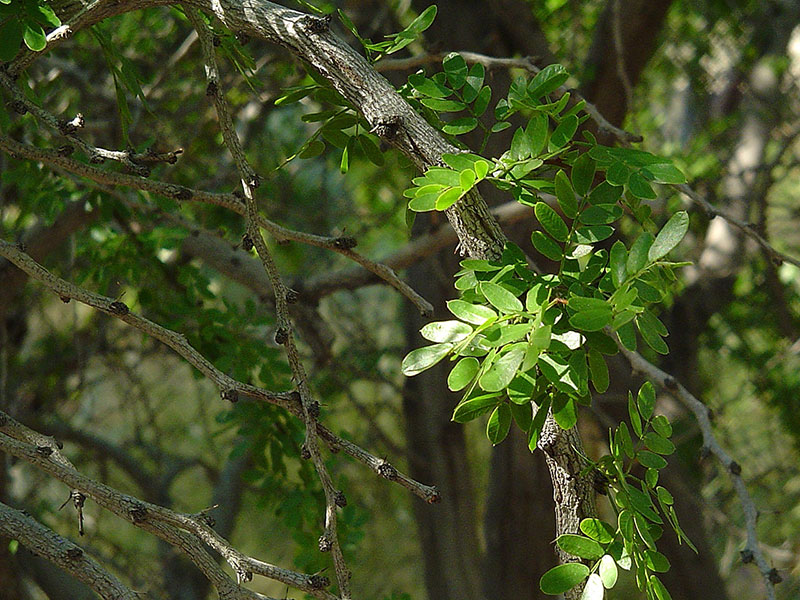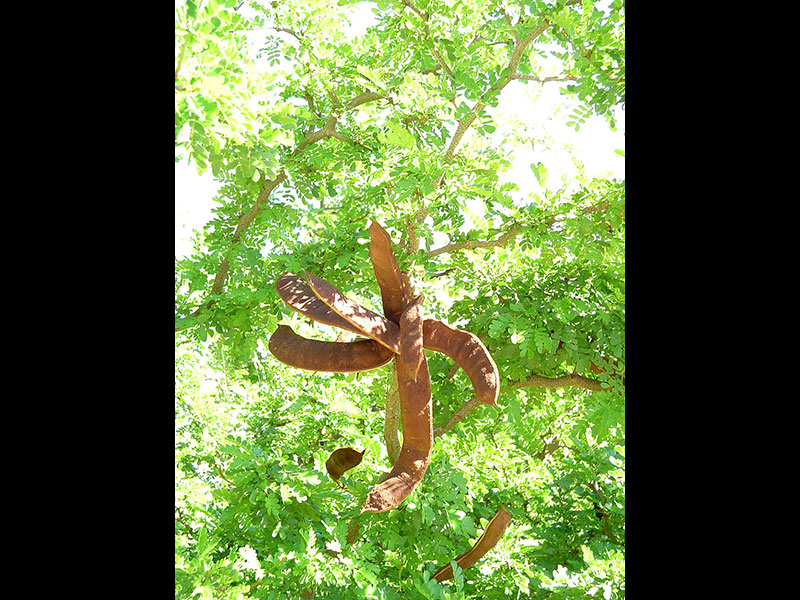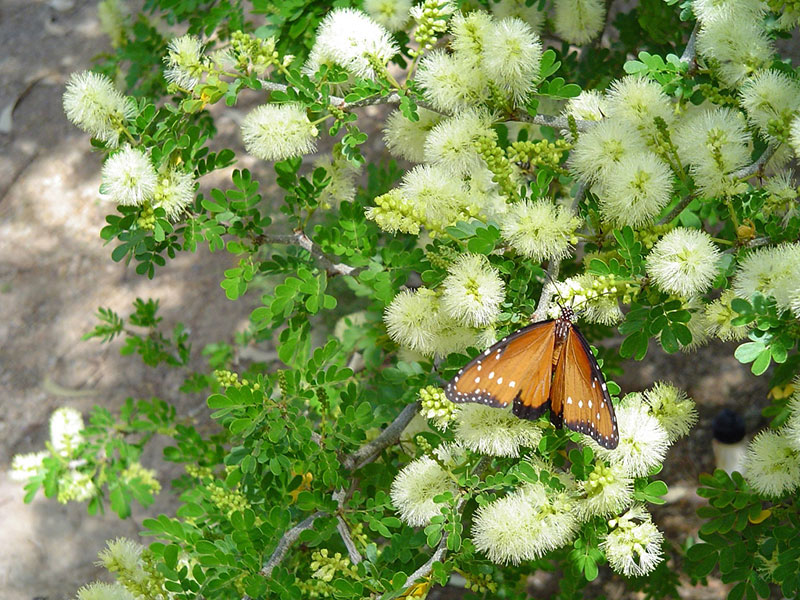Find plants
My list (0)
Texas Ebony
Ebenopsis ebano
Qualifies for Tree Enhancement Program
Climate ResiliencyA handsome tree reminiscent of certain acacia and mesquite trees, but with a somewhat lusher appearance. One of the few vibrantly green desert trees. Form is irregular when young, but becomes more regular and rounded in maturity. Thorny, distinctively zigzagging branches are covered in medium to deep green glossy leaves which are divided into rounded leaflets. The leaves fold up at night or in low light. Fragrant, cream to yellow, fluffy rod-shaped flowers cover the tree from late spring through autumn, attracting bees and butterflies, including the Viceroy. Long woody seed pods persist through the winter. Some litter from pods and flowers. Prune for shape when young and to thin the crown of mature trees if needed in early spring. Does not respond well to topping. A mature tree provides dense shade if the crown is not thinned, but will also be more susceptible to damage in a wind storm. As a legume, creates its own fertilizer. Synonym: Pithecellobium flexicaule.
- Plant type: Tree
- Maintenance level: Medium
- Water requirement: Low
- Sun exposure: Full, Part Sun, Reflected Heat
- Height range: 20–30 Feet
- Width range: 15–25 Feet
- Canopy value: 236 ft²
- Growth rate: Medium, Slow
- Seasonal habit: Semi-Evergreen
- Flower color: Yellow, White
- Flower season: Spring, Summer, Autumn
- Fruit color: Brown
- Fruit season: Autumn, Winter
- General foliage color: Green
- Design style: Pollinator Plants, Thorns/Spines
- Hardiness cold tolerance: 10 °F
- Soil preference: Sand, Clay, Loam, Rocky, Well Drained, Dry
- Native location: Texas and northern Mexico (Chihuahuan Desert)
- PH preference: Alkaline/Basic, Neutral, Not Particular
- Sunset zones: 10, 11, 12, 13
- USDA hardiness zone: 8a, 8b, 9a, 9b, 10a, 10b, 11a, 11b
New Search
